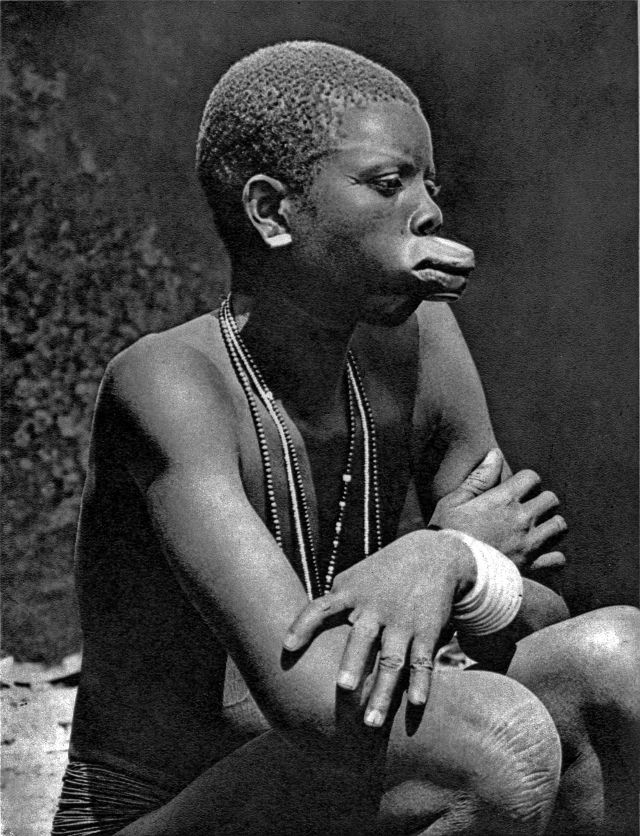The Mursi, Chai, and Tirma are probably the last groups in Africa amongst whom it is still the norm for women to wear large pottery or wooden discs or ‘plates’ on their lower lips. The lip plate (dhebi a tugging) has become the chief visible distinguishing characteristic of the Mursi and made them a prime attraction for tourists.
A girl’s lower lip is cut, by her mother or by another woman of her settlement, when she reaches the age of 15 or 16. The cut is held open by a wooden plug until the wound heals, which can take around 3 months. It appears to be up to the individual girl to decide how far to stretch the lip, by inserting progressively larger plugs over several months.
It is uncertain how this bizarre custom came into being. One theory is that lip plating originated as a deliberate disfigurement designed to make women and young girls less attractive to slave traders. Some researchers claim that the size of the lip plate (the bigger the better) was a sign of social importance or wealth within the tribe. Another analysis indicated that the bigger the size of the lip plate, the bigger the dowry a bride would receive on her wedding day. For example, the larger the lip plate, the greater number of cows the bride’s father can demand in his daughter’s dowry. But some researchers dispute this theory, arguing that the marriage of most tribal girls, as well as the size of their dowries, is prearranged long before their lips are cut. Others suggest that lip plating is simply an ornamentation meant to symbolize a woman’s strength and self-esteem. The practice is also described as being a sign of social maturity and reaching reproductive age, thus indicating a girl’s eligibility to become a wife.























